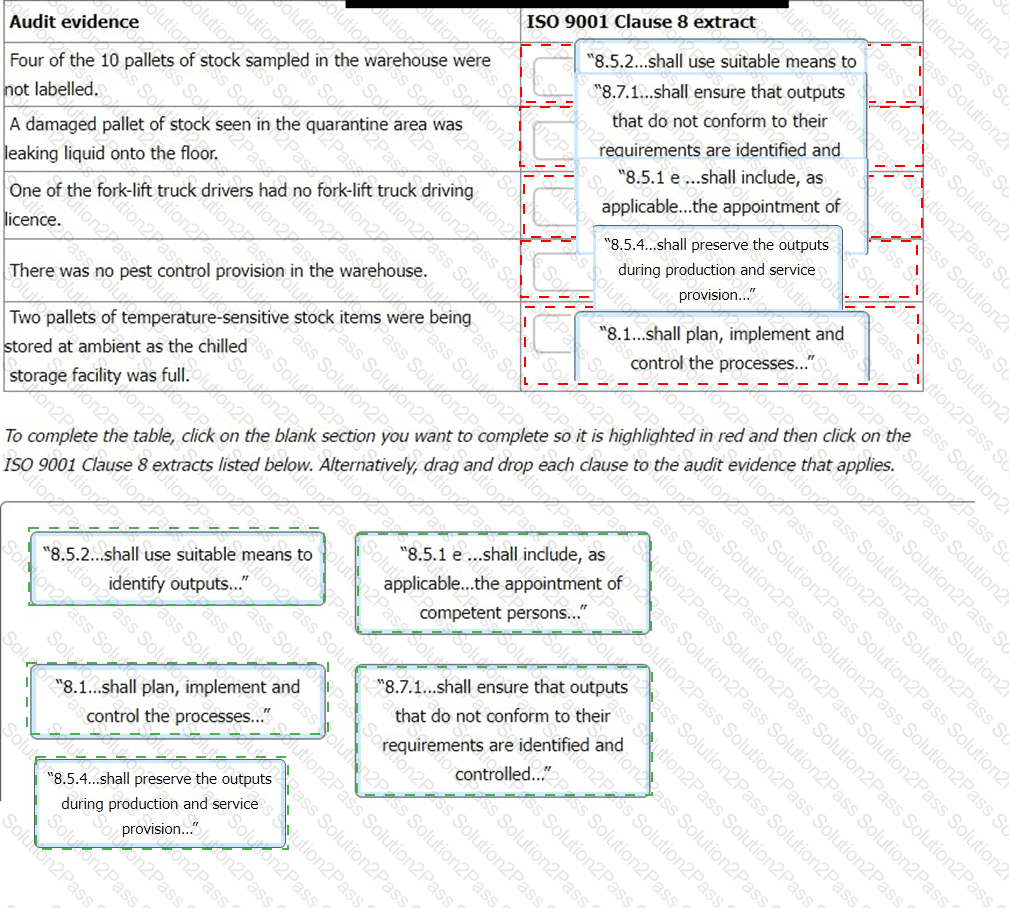ISO-9001-Lead-Auditor PECB QMS ISO 9001:2015 Lead Auditor Exam Free Practice Exam Questions (2025 Updated)
Prepare effectively for your PECB ISO-9001-Lead-Auditor QMS ISO 9001:2015 Lead Auditor Exam certification with our extensive collection of free, high-quality practice questions. Each question is designed to mirror the actual exam format and objectives, complete with comprehensive answers and detailed explanations. Our materials are regularly updated for 2025, ensuring you have the most current resources to build confidence and succeed on your first attempt.
How much time is usually spent on the Stage 1 audit?
You are carrying out an audit at a single-site organisation seeking certification to ISO 9001 for the first time. The organisation offers warehousing and export services to customers. Customers are invoiced for the time stock items are stored in the warehouse. Transport to and from the warehouse is controlled by the organisation and approved subcontract transport services are used. The organization does not have its own transport vehicles. Stock items are not purchased by the organisation.
You have gathered audit evidence as outlined in the table. Match the ISO 9001 Clause 8 extract to the audit evidence.
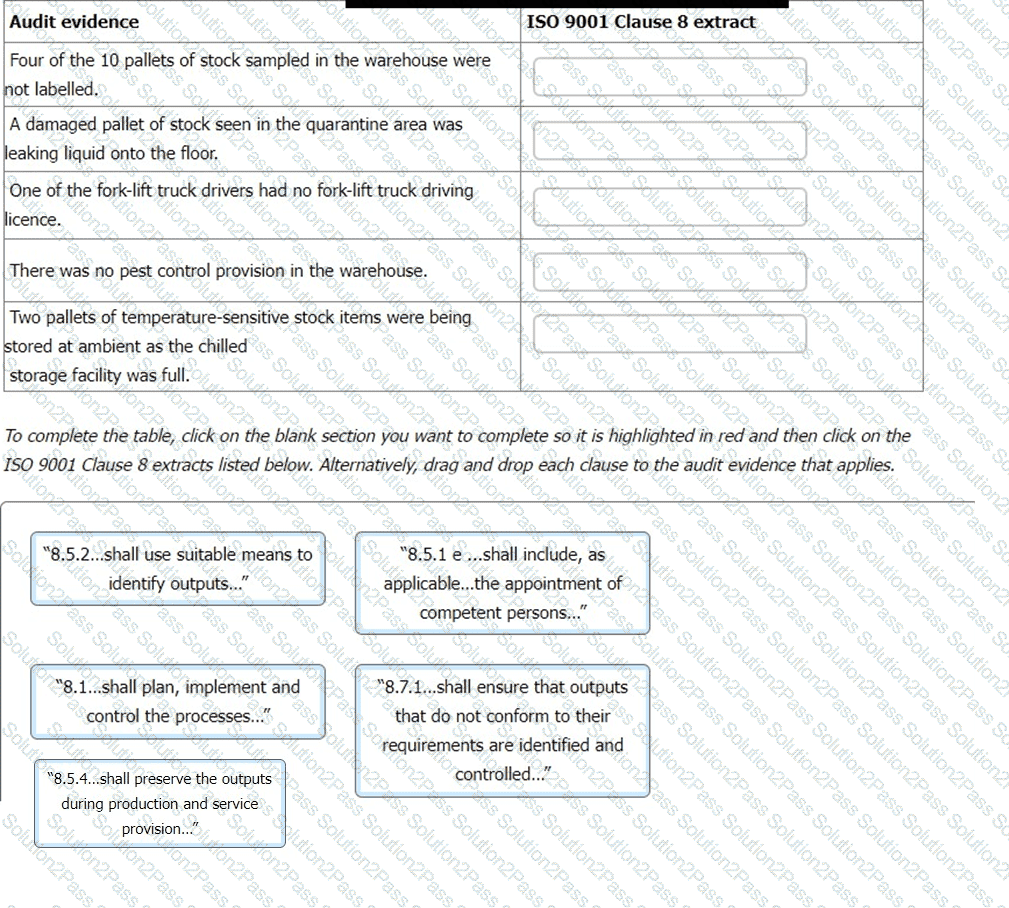
XYZ Corporation is an organisation that employs 100 people. As the audit team leader, you are conducting a certification audit at Stage 1. When reviewing the quality management system (QMS)
documentation, you find that quality objectives have been set for every employee in the organisation except top management. The Quality Manager complains that this has created a lot of resistance
to the QMS, and the Chief Executive is asking questions about how much it will cost. He asks for your opinion on whether this is the correct method of setting objectives.
How would you respond with the following options? Select three.
You are conducting an audit at an organisation seeking certification to ISO 9001 for the first time. The organisation offers health and safety training to customers. Training courses are offered either as open courses, delivered at a public venue, or online, or as courses that are tailored to meet specific requirements. The business operates from a single office and those who deliver the training are either full-time employees or subcontractors.
You have gathered audit evidence as outlined below. Match the ISO 9001 Clause 8 extract to the audit evidence.
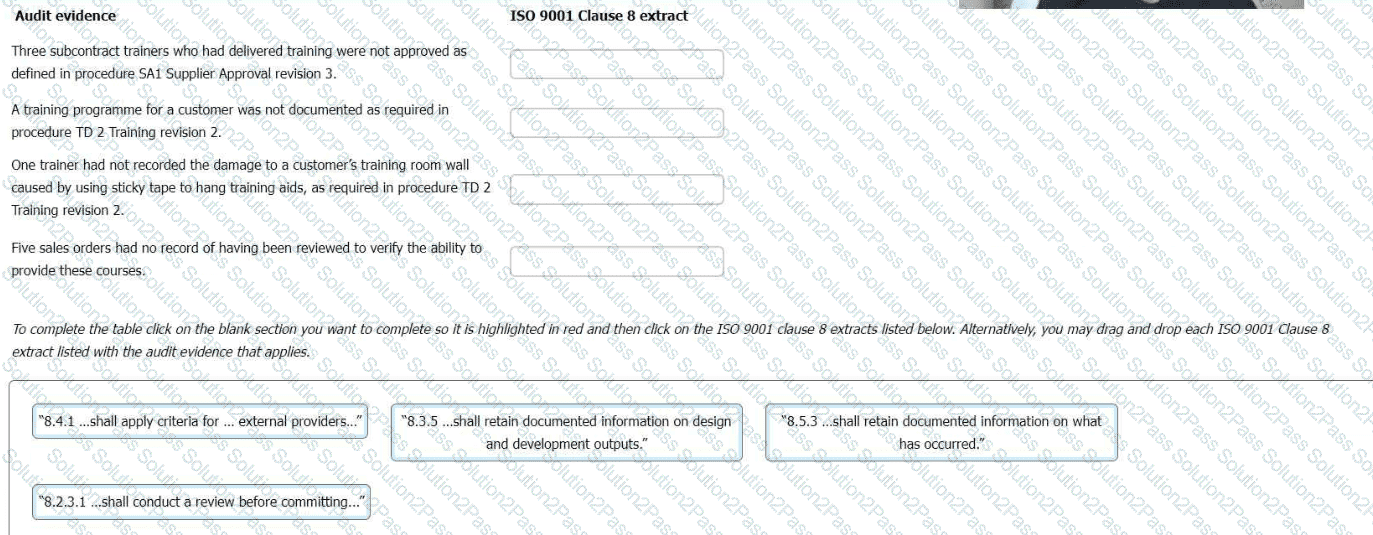
You are carrying out an audit at a single-site organisation seeking certification to ISO 9001 for the first time. The organisation manufactures
cosmetics for major retailers.
You are interviewing the Manufacturing Manager (MM).
You: "I would like to begin by looking at the cleaning controls."
MM: "We record the cleaning of the equipment at the end of every batch. This document details the minimum cleaning frequency and the
procedures to follow for all areas and each item of equipment. The person who carries out the cleaning puts their initial on the document and records
the time and date alongside."
Narrative: You sample production records over 3-days and note down evidence of nonconformity as per the table below.
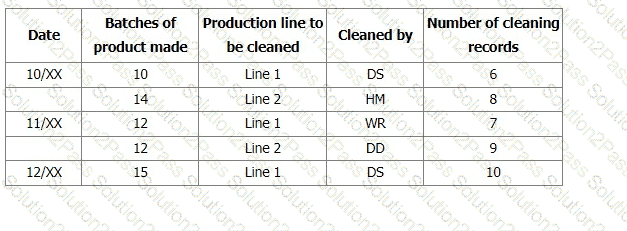
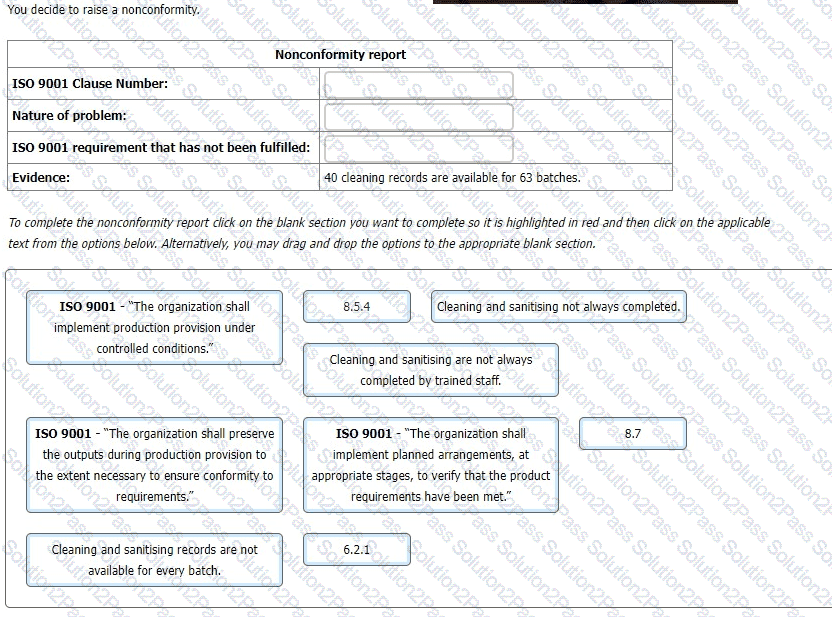
You are conducting a third-party audit to ISO 9001 and interviewing the Training Manager. She explains that training is more
important than ever because the organisation has had to reduce the number of staff employed. Many of the remaining staff
are now required to be 'multi-skilled'. You ask to see plans for the multi-skilling training and are shown plans that look
comprehensive, and include both 'on the job" training and internal and external training courses.
The records indicate that several staff required parts of their training to be repeated one month after the first training was
provided. You ask why this was needed and are told that an investigation of customer complaints identified that several staff
members did not complete certain tasks in the correct manner. The extra training was therefore recommended as a
corrective action.
Based on this interview, which two of the tollowing audit trails would be the most appropriate to follow?
Select the two most appropriate audit trails from the following.
An audit team of three people is conducting a Stage 2 audit to ISO 9001 of an engineering organisation that manufactures sacrificial anodes for the oil and gas industry in marine environments. These are aluminium products designed to prevent corrosion of submerged steel structures. You, as one of the auditors, find that the organisation has shipped anodes for Project DK in the Gulf of Mexico before the galvanic efficiency test results for the anodes have been fully analysed and reported as required by the customer. The Quality Manager explains that the Managing Director authorised the release of the anodes to avoid late delivery as penalties would be Imposed. The customer was not informed since the tests very rarely fall below the required efficiency. You raise a nonconformity against clause 8.6 of ISO 9001.
At the Closing meeting, the audit team leader presents the findings of the audit and comes to the above
nonconformity. The Quality Manager produces the test report for Project DK, which shows an acceptable galvanic efficiency, and presents an email from the customer confirming acceptance of the anodes. He asks that the nonconformity be withdrawn.
Which two of the following responses by the audit team leader would be acceptable?
